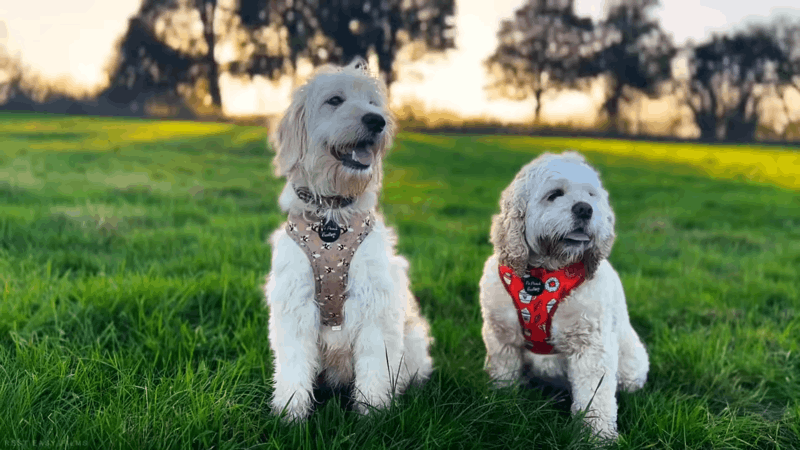No products in the cart.
Dogs of many breeds and ages can suffer from the common ailment known as anemia in dogs. To identify the symptoms of anemia and seek prompt veterinarian care, responsible pet owners must be aware of the fundamentals of the condition.
The origins, symptoms, types, and therapies for canine anemia are covered in this blog. Understanding anemia can help you give your dog or other pet better health and enjoyment.
What is Anemia in Dogs?

Anemia in dogs is a condition characterized by a low red blood cell count or reduced hemoglobin levels in the bloodstream. Red blood cells play a vital role in carrying oxygen throughout the body. Prompt veterinary evaluation is essential to determine the underlying cause and initiate appropriate treatment.
What Causes Anemia in Dogs?
Anemia in dogs can be caused by a variety of factors, including:
- Nutritional deficiencies: Inadequate intake of essential nutrients like iron, vitamin B12, or folate can lead to anemia.
- Blood loss: Trauma, internal bleeding (e.g., from ulcers, tumors), or parasites such as fleas and ticks can result in significant blood loss, leading to anemia.
- Underlying health conditions: Diseases such as kidney disease, liver disease, certain infections and autoimmune disorders in dogs can affect the production or lifespan of red blood cells, causing anemia.
- Toxicity: Ingestion of certain toxins or medications can damage the bone marrow, where red blood cells are produced, leading to anemia.
- Chronic diseases: Conditions like cancer, chronic inflammation, or endocrine disorders can disrupt the body’s ability to produce or maintain healthy red blood cells.
- Inherited disorders: Some breeds are predisposed to genetic conditions that affect red blood cell production or function, leading to anemia.
For anemia to be effectively treated and managed, the underlying cause must be found. In each situation, a comprehensive veterinarian evaluation with diagnostic imaging and blood testing may be required to identify the precise cause.
Symptoms of Anemia in Dogs
Dog anemia symptoms can appear in a variety of ways and are crucial markers of underlying medical conditions. These may include but are not limited to:
- Pale gums and mucous membranes: A decrease in red blood cell concentration can cause pale or white gums and mucous – one of the most noticeable signs of anemia.
- Weakness and fatigue: Anemic dogs may exhibit lethargy, weakness, and decreased energy levels. They may appear less interested in physical activities and may tire easily.
- Rapid or labored breathing: Difficulty breathing or exhibit rapid, shallow breathing are the symptoms that dogs with anemia may experience when the body tries to compensate for reduced oxygen levels in the blood.
- Decreased appetite: Anemic dogs may show a decreased interest in food or may refuse to eat altogether. This loss of appetite can contribute to weight loss and further weakness.
- Exercise intolerance: Dogs with anemia may show reluctance to engage in physical activity, as their bodies struggle to transport oxygen efficiently to their muscles. This can result in decreased stamina and reluctance to participate in play or exercise.
Depending on the underlying reason and duration of the anemia, these symptoms can differ in severity. If your dogs have any of these signs, veterinarian should be consulted to have a proper diagnosis and treatment.
Types of Anemia in Dogs
Depending on the underlying cause and the mechanism, anemia can be classified into various types. Some common types of anemia in dogs include:
- Regenerative anemia: Occurs when the body produces more red blood cells to compensate for blood loss or destruction, often indicating ongoing bleeding or hemolysis.
- Non-regenerative anemia: Develops when the bone marrow fails to produce enough new red blood cells, suggesting underlying bone marrow disorders, chronic diseases, or nutritional deficiencies.
- Hemolytic anemia: Results from the premature destruction of red blood cells, caused by immune-mediated disorders, infections, toxins, or inherited conditions.
- Iron-deficiency anemia: Caused by insufficient iron for hemoglobin production, stemming from inadequate dietary intake, chronic blood loss, or conditions impairing iron absorption or utilization.
- Anemia of chronic disease: Associated with chronic inflammatory conditions like cancer, autoimmune diseases, or chronic infections, characterized by inflammatory changes and impaired red blood cell production.
- Nutritional anemia: Iron, vitamin B12, and folate deficits are caused by poor-quality diets, malabsorption issues, or gastrointestinal ailments.
- Infectious anemia: Caused by infectious diseases like ehrlichiosis, babesiosis, or hemotropic mycoplasmosis, directly attacking red blood cells or inducing immune-mediated destruction.
- Toxic anemia: Results from exposure to toxins, medications, or environmental hazards, leading to hemolytic anemia or bone marrow suppression. Certain drugs, chemicals, plants, and heavy metals are common culprits.
Identifying the exact type of anemia is so essential, pet owners can determine the true cause and provide suitable treatment approaches. A thorough veterinary evaluation, including blood tests, diagnostic imaging, and sometimes bone marrow aspiration, may be necessary to accurately diagnose the type of anemia affecting a dog.
Is Anemia Fatal?

While anemia itself is not typically fatal, its severity and underlying cause can greatly affect a dog’s health. Mild cases can often be managed with treatment, but severe or chronic anemia can lead to life-threatening complications if left untreated.
The cause of the anemia, the general health of the dog, and the efficacy of the treatment are the factors that can influence the outcome.Prompt veterinary care is crucial for diagnosing and managing anemia to improve the dog’s condition and prevent further complications.
How to Treat Anemia in Dogs at Home?

Treating anemia in dogs at home is not recommended without veterinary guidance. While supportive care such as providing a balanced diet, ensuring hydration, and minimizing stress can aid in recovery, the underlying cause of the anemia requires professional diagnosis and treatment.
To determine the cause of the anemia and implement appropriate interventions, like medications, dietary changes, or other therapies tailored to your dog’s specific needs, a veterinarian should be consulted. Never attempt to treat anemia at home without consulting a veterinarian, as improper management can worsen the condition and pose risks to your dog’s health.
Diet for Anemic Dogs
A diet for anemic dogs should focus on providing essential nutrients that support red blood cell production and overall health. Here are some dietary considerations for anemic dogs:
- Iron-rich foods: Include iron-rich foods in your dog’s diet to help replenish iron stores and support red blood cell production. Good sources of dietary iron include lean meats, organ meats, and fish.
- Vitamin B12: VVitamin B12 is necessary for the production of red blood cells, supplying enough of it in your dog’s diet is so important.
- Folate (Vitamin B9): Folate is another important nutrient involved in red blood cell synthesis. Green leafy vegetables, legumes, and liver are excellent sources of folate.
- High-quality protein: Provide high-quality protein sources to support muscle maintenance and overall health. Lean meats, eggs, dairy products, and plant-based proteins (such as beans and lentils) are all good options.
- Omega-3 fatty acids: Incorporate foods rich in omega-3 fatty acids, such as fatty fish (salmon, mackerel, sardines) or fish oil supplements, to help reduce inflammation and support cardiovascular health.
- Hydration: Ensure your dog has access to fresh, clean water at all times to prevent dehydration, which can exacerbate anemia.
- Avoidance of iron blockers: Some foods, such as dairy products and certain grains, contain compounds that can inhibit iron absorption. Limiting these foods in your dog’s diet may help improve iron utilization.
- Consultation with a veterinarian: Work with your veterinarian to develop a customized diet plan tailored to your dog’s specific nutritional needs and underlying health conditions.
It’s crucial to keep in mind that treating canine anemia may require more than just nutritional adjustments. Anemia often requires comprehensive veterinary evaluation and treatment to address the underlying cause and restore red blood cell levels to normal. Before making any changes to your dog’s diet, getting advice from your veterinarian is important.
Food for Anemic Dog
When selecting food for an anemic dog, it’s important to focus on nutrient-rich options that support red blood cell production and overall health. Here are some suitable choices:
- Lean proteins: Incorporate lean protein sources such as cooked chicken, turkey, or beef into your dog’s diet. These meats are rich in iron, which is essential for red blood cell formation.
- Organ meats: Liver, in particular, is a nutrient-dense food that contains high levels of iron, vitamin B12, and other essential nutrients. However, organ meats should be fed in moderation to avoid excessive intake of certain vitamins and minerals.
- Fish: Fatty fish like salmon, mackerel, and sardines are excellent sources of omega-3 fatty acids, which can help reduce inflammation and support cardiovascular health in anemic dogs.
- Eggs: Eggs are a highly digestible protein source and contain vitamins such as B12 and folate, which are important for red blood cell production.
- Leafy greens: Incorporate leafy green vegetables such as spinach, kale, and broccoli into your dog’s diet. These vegetables are rich in folate and other vitamins and minerals that support overall health.
- Beans and lentils: Legumes like beans and lentils are a good source of plant-based protein and contain nutrients such as iron and folate.
- Commercial dog food: Look for products that contain ingredients like meat, organ meats, and whole grains to ensure a balanced diet.
- Supplements: In some cases, your veterinarian may recommend supplements to support your dog’s nutritional needs. These may include iron supplements, vitamin B12 injections, or omega-3 fatty acid supplements.
It’s important to consult with your veterinarian before making any changes to your dog’s diet, especially if they are anemic. Your veterinarian can provide personalized recommendations based on your dog’s specific nutritional needs and underlying health condition.
Conclusion
Anemia in dogs is a serious condition with various underlying causes, including nutritional deficiencies, chronic diseases, and blood loss. With timely intervention and proper management, many cases of anemia in dogs can be effectively treated, improving their overall health and well-being. Collaboration with a veterinarian is essential for the best possible outcome.
Hello, I am Hazel Bennett, an experienced copywriter specializing in the fascinating topic of CBD for dogs. With a passion for pet wellness and extensive knowledge of CBD’s potential benefits, I am here to provide you with informative and engaging content.



